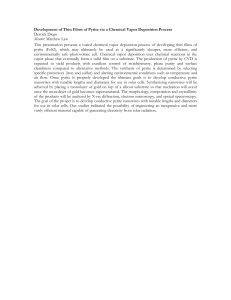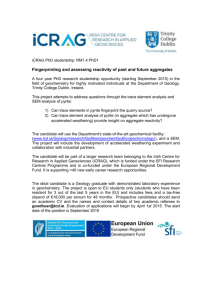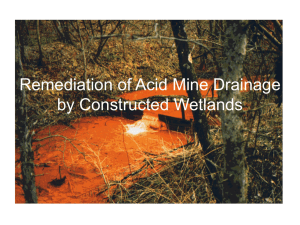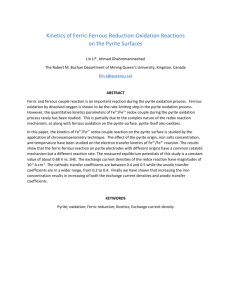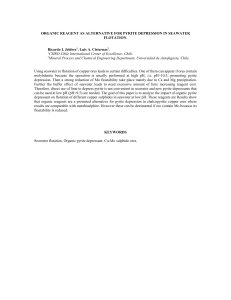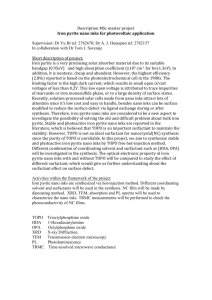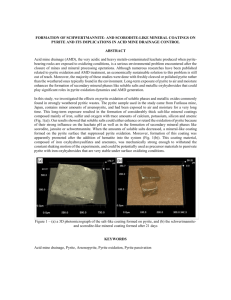Surface ligands exchange of iron pyrite NCs
advertisement
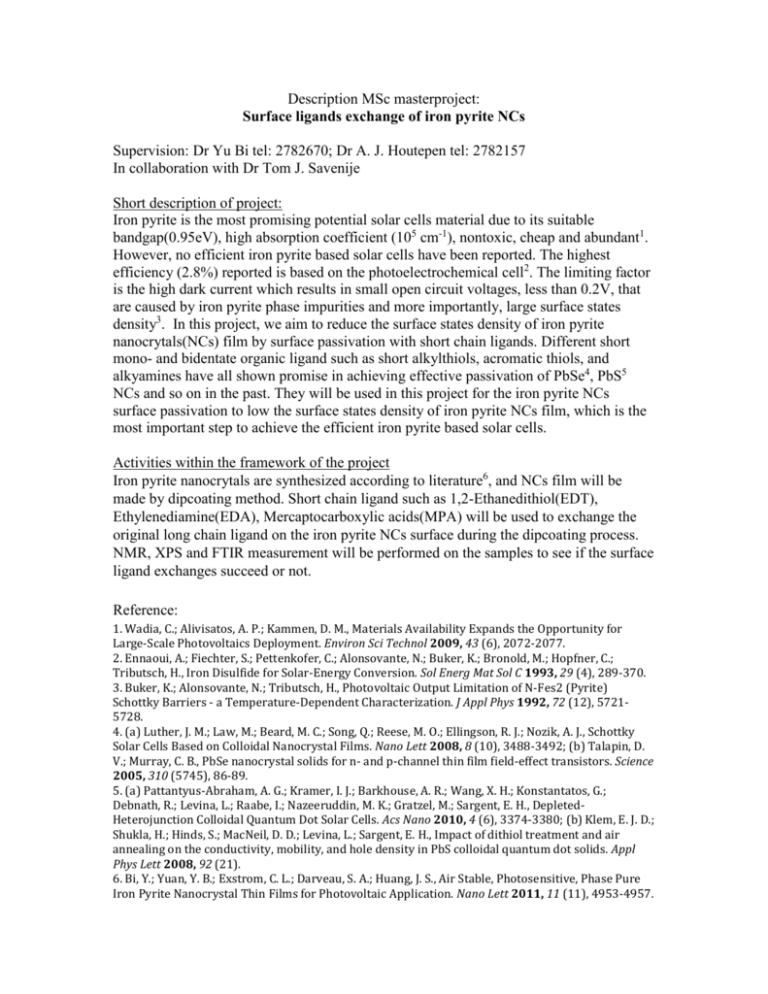
Description MSc masterproject: Surface ligands exchange of iron pyrite NCs Supervision: Dr Yu Bi tel: 2782670; Dr A. J. Houtepen tel: 2782157 In collaboration with Dr Tom J. Savenije Short description of project: Iron pyrite is the most promising potential solar cells material due to its suitable bandgap(0.95eV), high absorption coefficient (105 cm-1), nontoxic, cheap and abundant1. However, no efficient iron pyrite based solar cells have been reported. The highest efficiency (2.8%) reported is based on the photoelectrochemical cell2. The limiting factor is the high dark current which results in small open circuit voltages, less than 0.2V, that are caused by iron pyrite phase impurities and more importantly, large surface states density3. In this project, we aim to reduce the surface states density of iron pyrite nanocrytals(NCs) film by surface passivation with short chain ligands. Different short mono- and bidentate organic ligand such as short alkylthiols, acromatic thiols, and alkyamines have all shown promise in achieving effective passivation of PbSe4, PbS5 NCs and so on in the past. They will be used in this project for the iron pyrite NCs surface passivation to low the surface states density of iron pyrite NCs film, which is the most important step to achieve the efficient iron pyrite based solar cells. Activities within the framework of the project Iron pyrite nanocrytals are synthesized according to literature6, and NCs film will be made by dipcoating method. Short chain ligand such as 1,2-Ethanedithiol(EDT), Ethylenediamine(EDA), Mercaptocarboxylic acids(MPA) will be used to exchange the original long chain ligand on the iron pyrite NCs surface during the dipcoating process. NMR, XPS and FTIR measurement will be performed on the samples to see if the surface ligand exchanges succeed or not. Reference: 1. Wadia, C.; Alivisatos, A. P.; Kammen, D. M., Materials Availability Expands the Opportunity for Large-Scale Photovoltaics Deployment. Environ Sci Technol 2009, 43 (6), 2072-2077. 2. Ennaoui, A.; Fiechter, S.; Pettenkofer, C.; Alonsovante, N.; Buker, K.; Bronold, M.; Hopfner, C.; Tributsch, H., Iron Disulfide for Solar-Energy Conversion. Sol Energ Mat Sol C 1993, 29 (4), 289-370. 3. Buker, K.; Alonsovante, N.; Tributsch, H., Photovoltaic Output Limitation of N-Fes2 (Pyrite) Schottky Barriers - a Temperature-Dependent Characterization. J Appl Phys 1992, 72 (12), 57215728. 4. (a) Luther, J. M.; Law, M.; Beard, M. C.; Song, Q.; Reese, M. O.; Ellingson, R. J.; Nozik, A. J., Schottky Solar Cells Based on Colloidal Nanocrystal Films. Nano Lett 2008, 8 (10), 3488-3492; (b) Talapin, D. V.; Murray, C. B., PbSe nanocrystal solids for n- and p-channel thin film field-effect transistors. Science 2005, 310 (5745), 86-89. 5. (a) Pattantyus-Abraham, A. G.; Kramer, I. J.; Barkhouse, A. R.; Wang, X. H.; Konstantatos, G.; Debnath, R.; Levina, L.; Raabe, I.; Nazeeruddin, M. K.; Gratzel, M.; Sargent, E. H., DepletedHeterojunction Colloidal Quantum Dot Solar Cells. Acs Nano 2010, 4 (6), 3374-3380; (b) Klem, E. J. D.; Shukla, H.; Hinds, S.; MacNeil, D. D.; Levina, L.; Sargent, E. H., Impact of dithiol treatment and air annealing on the conductivity, mobility, and hole density in PbS colloidal quantum dot solids. Appl Phys Lett 2008, 92 (21). 6. Bi, Y.; Yuan, Y. B.; Exstrom, C. L.; Darveau, S. A.; Huang, J. S., Air Stable, Photosensitive, Phase Pure Iron Pyrite Nanocrystal Thin Films for Photovoltaic Application. Nano Lett 2011, 11 (11), 4953-4957.
